本文作者:石油醚
概要
Emily Balskus, 哈佛大学化学与化学生物学教授,哈佛大学麻省理工学院准会员,哈佛微生物科学计划教员,哈佛大学消化系统疾病中心会员,麻省理工学院微生物学信息学和治疗学中心成员。(课题组主页:https://www.microbialchemist.com/)
经历
- 1998-2002年 威廉姆斯学院获得学士学位( Prof. Thomas E. Smith)
- 本科期间的研究经验:
- 英国剑桥大学(2000–2001):(Steven V. Ley教授)
- 俄亥俄州立大学(2000年夏):(Leo A. Paquette教授)
- 荷兰莱顿大学(1999年夏):(Jan Reedijk教授)
- 2002–2003年,剑桥大学 温斯顿·丘吉尔学者(Prof. Steven V. Ley)
- 2003–2008年,哈佛大学获得博士学位(Prof. Eric N. Jacobsen)
- 2009年 夏季微生物多样性暑期课程(马萨诸塞州伍兹霍尔海洋生物实验室),独立研究项目标题:“在陆生和海洋微生物中寻找小分子介导的细胞外氧化还原”
- 2008年-2011年 美国国立卫生研究院NRSA博士后研究员,哈佛医学院生物化学与分子系(Prof. Christopher T. Walsh)
- 2011年-2015年 哈佛大学化学与化学生物学助理教授
- 2015年-2018年 哈佛大学化学与化学生物学副教授
- 2018年-至今 哈佛大学化学与化学生物学教授
获奖经历
- Tetrahedron Young Investigator Award (2019)
- Laureate in Chemistry, Blavatnik Award for Young Scientists (2019)
- Saltman Award Lecture, Metals in Biology Gordon Research Conference (2019)
- SN10 Scientists to Watch (2018)
- Finalist, Blavatnik Award for Young Scientists (2018)
- Eli Lilly Grantee Award (2018)
- Arthur C. Cope Scholar Award (2018)
- Pfizer Award in Enzyme Chemistry (2017)
- Hirata Award, Nagoya University and the Hirata Foundation (2016)
- HHMI-Gates Faculty Scholar (2016)
- Chemical and Engineering News Talented Twelve (2015)
- Camille Dreyfus Teacher-Scholar Award (2015)
- Cottrell Scholar Award (2015)
- NSF CAREER Award (2015)
- MIT Technology Review Innovator Under 35 (2014)
- Amgen Young Investigator’s Award (2014)
- Natural Products Reports Emerging Investigator Lectureship (2014)
- Sloan Research Fellowship (2014)
- Thieme Chemistry Journal Awardee (2014)
- Damon Runyon–Rachleff Innovation Award (2014)
- George W. Merck Fellowship (2013)
- Kavli Fellow, National Academy of Sciences (2013)
- Packard Fellowship for Science and Engineering (2013)
- Levenson Teaching Award Nominee (2013)
- NIH Director’s New Innovator Award (2012)
- Searle Scholars Program (2012)
- Eli Lilly New Faculty Award (2012)
- Smith Family Award for Excellence in Biomedical Research (2011)
- Milton Fund Award (2011)
- Poster Award, Gordon Research Conference in Biocatalysis (2010)
- NIH NRSA Postdoctoral Fellowship (2008–2011)
- ACS Division of Organic Chemistry Fellowship (2006–2007)
- Student Poster Award at Pacifichem Conference (2005)
- CUE Certificate of Distinction in Teaching, Harvard University (Spring 2004)
- National Science Foundation Predoctoral Fellowship (2003–2006)
- Winston Churchill Scholarship (2002–2003)
- John Sabin Adriance Prize in Chemistry, Williams College (2002)
- Baxter Scholarship, Williams College (2001–2002)
- Departmental Prize in Part II Chemistry, highest score on the Tripos Exam, University of Cambridge (2001)
- Scholarship, honoris causa, Magdalene College, University of Cambridge (2001)
- Bernard F. Saunders Prize in Natural Sciences, University of Cambridge (2001)
- Pfizer Undergraduate Summer Research Fellowship (2001)
- Barry M. Goldwater Scholarship (2001–2002)
- Harold H. Warren Prize in Organic Chemistry, Williams College (1999)
- Tyng Scholarship, Williams College (1998–2002)
研究方向
我们生活在一个微生物的世界中。 地球上的微生物是可见宇宙中的恒星数量的700万倍。 微生物进化各种不同化学能力使的他们能够在各种栖息地中生长和生存,并在复杂的微生物群落(微生物群落)中相互作用。尽管这些微生物组合对于包括人类在内的许多环境和生物的健康至关重要,但我们目前对它们的功能尚缺乏的了解。
Balskus实验室的总体研究目标是通过将微生物学和化学相结合的开拓性方法来转变我们对微生物和微生物群落的理解。通过揭示微生物相互作用的分子基础,Emily Balskus课题组的工作不仅将揭示微生物学的基本见解,还将为医学,农业和环境面临的问题提供创新的解决方案。(scheme 1 )其课题组的研究方向答题分为以下三方面。1-14
Scheme 1 Balskus实验室的总体研究目标
1. 人类微生物组的研究。1-4
人类被数以万亿计的微生物包围,这些微生物对健康和疾病产生深远的影响。Emily Balskus课题组认为把微生物活动与基因和酶联系起来是破解这些生物的生物学作用并释放其治疗潜力。通过将生物信息学方法与对酶和代谢途径的化学理解相结合来研究人类微生物组独特的化学功能方面如何作用(图1)。Balskus课题组利用上面的方法来研究肠道微生物如何消耗必需的饮食营养(胆碱),产生破坏DNA的基因毒素(colibactin)和代谢药物(地高辛)。通过研究微生物组测序数据中未表征的基因和酶,发现了以前未知的微生物活性。最后,证明其对肠道微生物酶的分子理解对于阐明这些生物如何影响宿主生物学以及开发调节其功能的方法至关重要。
图1 在人类肠道菌群中发现自由基依赖性酶
2. 生物合成逻辑来发现新酶5-11
微生物酶可以进行传统有机化学家无法企及的反应。Emily Balskus课题组正在研究微生物如何制造结构异常的天然产物,从而发现功能独特的酶。(图2)通过对生物合成逻辑的理解,确定了含有官能团和特殊结构的天然产物,而这些产物并不能用已知的酶化学方法来解释。通过对cylindrocyclophane,lomaiviticin,bartolosid,cremeomycin,L-Alanosine生物合成基因簇及其编码酶的鉴定显示出令人着迷的反应性。(包括卤化未活化碳中心和芳环与烷基卤化物连接并构建N-N键的酶)。发现这些酶还将扩展可用于生物催化和代谢工程的“工具包”以及满足化学合成中的关键需求。
图2 研究cylindrocyclophane发现可编辑的II型硫酯酶
3. 具有生物相容性的微生物的研究12-14
在自然栖息地中,大多数微生物在遗传上都不易处理,这是限制我们操纵其活动的能力的障碍。Emily Balskus设计了一种非遗传方法来操纵微生物的新陈代谢:生物相容性化学。生物相容性转化是非酶化学反应,以改变生物学功能的方式与活生物体的代谢相互作用(图3 )。我们已经通过进行两个应用程序证明了此通用策略的可行性。通过整合有机化学和合成生物学领域,我们提供了使用微生物进行化学生产的新方法,并提供了控制微生物生长和行为的机会。
图3胶束增强大肠杆菌中的生物相容性化学
其他:
课题组欢乐的时光
参考文献
- [1] Jiang, Y. et al. The reactivity of an unusual amidase may explain colibactin’s DNA cross-linking activity. 567248, doi:10.1101/567248 (2019).
- [2] Kenny, D. J. & Balskus, E. P. Engineering chemical interactions in microbial communities. Chem. Soc. Rev. 47, 1705-1729, doi:10.1039/C7CS00664K (2018).
- [3] Koppel, N., Bisanz, J. E., Pandelia, M.-E., Turnbaugh, P. J. & Balskus, E. P. J. E. Discovery and characterization of a prevalent human gut bacterial enzyme sufficient for the inactivation of a family of plant toxins. 7, e33953 (2018).
- [4] Levin, B. J. & Balskus, E. P. Discovering radical-dependent enzymes in the human gut microbiota. Curr. Opin. Chem. Biol. 47, 86-93, doi:10.1016/j.cbpa.2018.09.011 (2018).
- [5] Rajakovich, L. J. & Balskus, E. P. Metabolic functions of the human gut microbiota: the role of metalloenzymes. Nat. Prod. Rep. 36, 593-625, doi:10.1039/C8NP00074C (2019).
- [6] Wilson, M. R. et al. The human gut bacterial genotoxin colibactin alkylates DNA. Science 363, 709, doi:10.1126/science.aar7785 (2019).
- [7] Ng, T. L. et al. The L-Alanosine Gene Cluster Encodes a Pathway for Diazeniumdiolate Biosynthesis. Chembiochem, doi:10.1002/cbic.201900565 (2019).
- [8] Nakamura, H., Wang, J. X. & Balskus, E. P. Assembly line termination in cylindrocyclophane biosynthesis: discovery of an editing type II thioesterase domain in a type I polyketide synthase. Chem. Sci. 6, 3816-3822, doi:10.1039/C4SC03132F (2015).
- [9] Wallace, S., Schultz, E. E. & Balskus, E. P. Using non-enzymatic chemistry to influence microbial metabolism. Curr. Opin. Chem. Biol. 25, 71-79, doi:10.1016/j.cbpa.2014.12.024 (2015).
- [10] Schneider, B. A. & Balskus, E. P. Discovery of small molecule protease inhibitors by investigating a widespread human gut bacterial biosynthetic pathway. Tetrahedron 74, 3215-3230, doi:10.1016/j.tet.2018.03.043 (2018).
- [11] Zha, L. et al. Colibactin assembly line enzymes use S-adenosylmethionine to build a cyclopropane ring. Nat. Chem. Biol. 13, 1063-+, doi:10.1038/nchembio.2448 (2017).
- [12] Volpe, M. R. et al. In Vitro Characterization of the Colibactin-Activating Peptidase ClbP Enables Development of a Fluorogenic Activity Probe. ACS. Chem. Biol. 14, 1097-1101, doi:10.1021/acschembio.9b00069 (2019).
- [13] Wallace, S. & Balskus, E. P. Designer Micelles Accelerate Flux Through Engineered Metabolism in E-coli and Support Biocompatible Chemistry. Angew. Chem. Int. Ed. 55, 6023-6027, doi:10.1002/anie.201600966 (2016).
- [14] Balskus, E. P. Addressing Infectious Disease Challenges by Investigating Microbiomes. ACS Infect. Dis. 2, 453-455, doi:10.1021/acsinfecdis.6b00100 (2016).
本文版权属于 Chem-Station化学空间, 欢迎点击按钮分享,未经许可,谢绝转载!


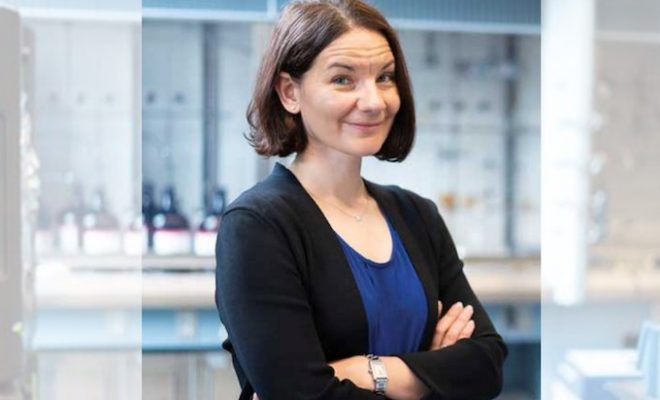









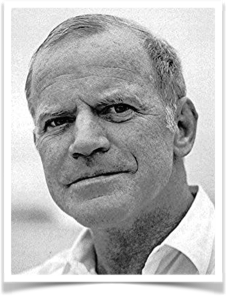
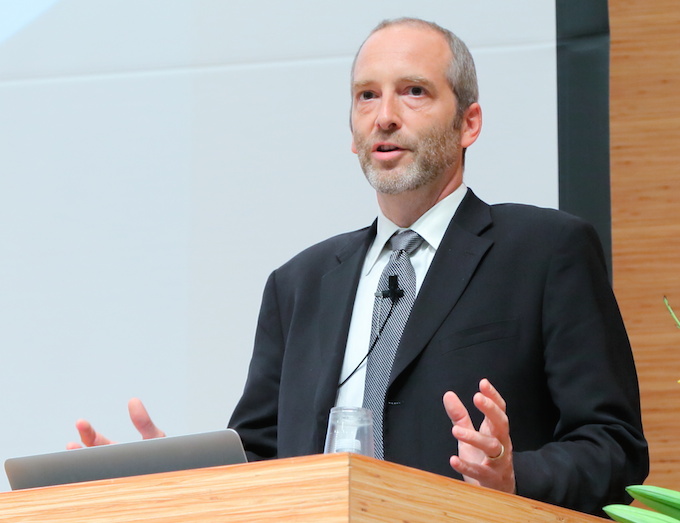


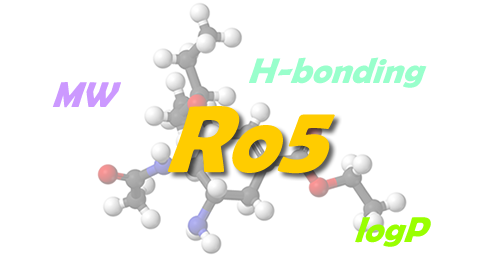












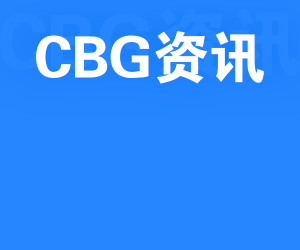



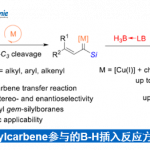


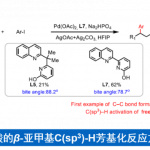
No comments yet.